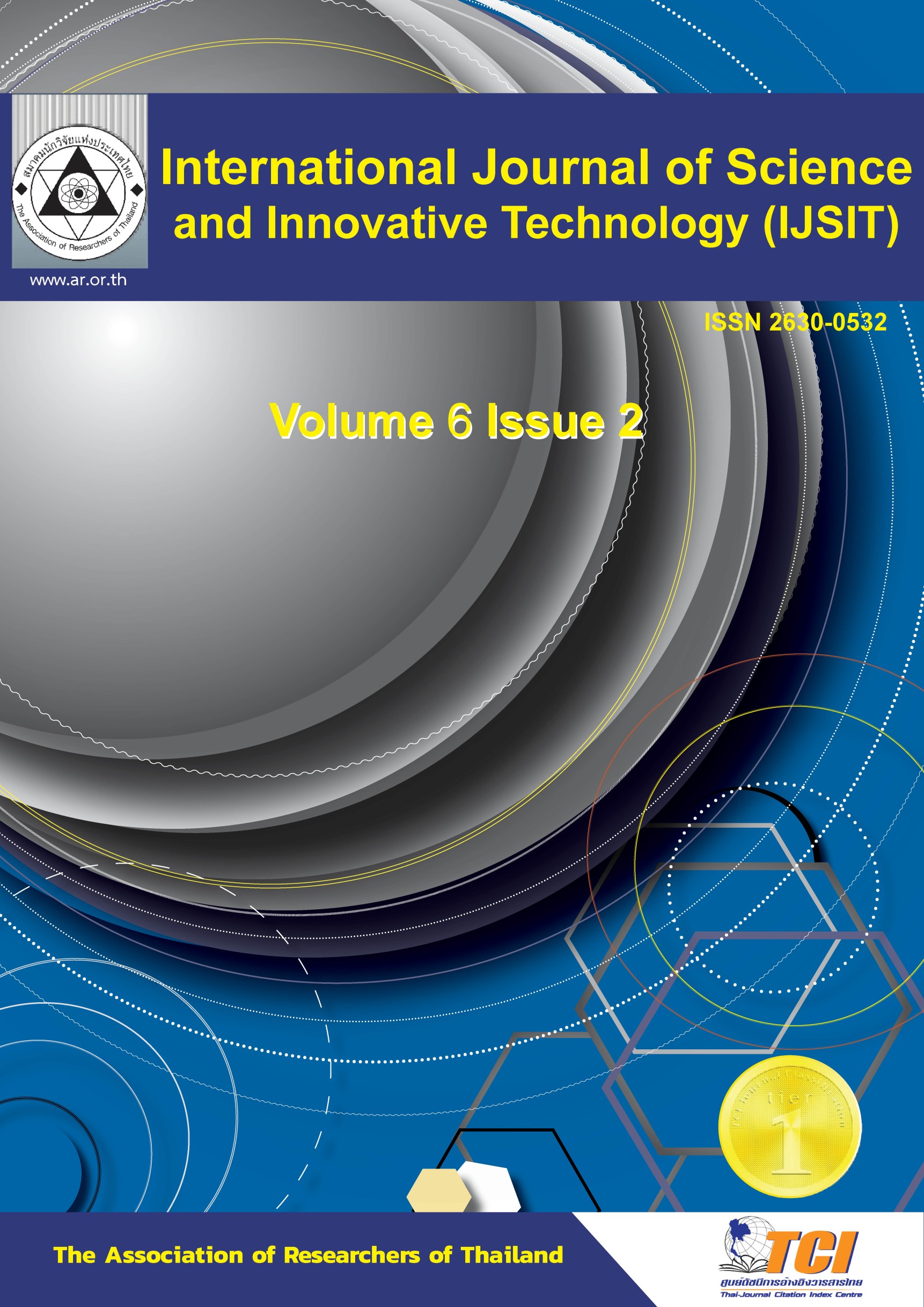Flow and Heat Transfer Characteristic on the Downstream Surface in case of Solid Body and Vortex Generating Jet Turbulators
Main Article Content
Abstract
In this research, the flow and heat transfer characteristics inside wind tunnel produced circulation flow were studied using computational fluid dynamics. Four types of circulation flow generators (2 types of solid turbulators and two types of vortex generating jets, VGJs, turbulators): (1) rectangular fin mounted crossing the flow, (2) a row of pins mounted perpendicularly on the surface, (3) a slot jet, and (4) a row of circular jets were attached prior heat transfer surface inside constant flow velocity tunnel. The tunnel inlet air velocity was set at 5 m/s with uniform flow condition. In case of VGJs, the velocity ratios, which was defined as the ratio of a jet velocity to a mainstream velocity, VR, of 0.33, 0.6, 1.0, 1.3, were simulates to investigate the heat transfer of downstream surface under constant heat flux condition. The results show that the use of VGJs turbulators can enhance heat transfer as the similar to the use of solid turbulators. It is due to circulating flow along downstream direction that is generated from both turbulators.
Article Details

This work is licensed under a Creative Commons Attribution-NonCommercial-NoDerivatives 4.0 International License.
References
Reference
Aris, M.S., McGlen, R., Owen, I., Sutcliffe, C.J. 2011. An experimental investigation into the deployment of 3-D, finned wing and shape memory alloy vortex generators in a forced air convection heat pipe fin stack, Applied Thermal Engineering. 31(14–15), 2230–2240.
Axtmann, M., Poser, R., Wolfersdorf, J.V, Bouchez, M. 2016. Endwall heat transfer and pressure loss measurements in staggered arrays of adiabatic pin fins, Applied Thermal Engineering, 103, 1048–1056.
Fiebig, M. 1998. Vortices, generators and heat transfer, Chemical Engineering Research and Design. 76 (2), 108–123.
Jabbal. M., Zhong. S. 2008. The near wall effect of synthetic jets in a boundary layer, 2008, International Journal of Heat and Fluid Flow, 29, 119–130.
Jacobi, A.M., Shah, R.K. 1995. Heat transfer surface enhancement through the use of longitudinal vortices: a review of recent progress, Experimental Thermal and Fluid Science,11(3), 295–309.
Narato, P., Wae-hayee, M., Kaewchoothong N., Nuntadusit, C. 2021. Heat transfer enhancement and flow characteristics in a rectangular channel having inclined pin arrays mounted on the endwall surface, International Communications in Heat and Mass Transfer, 122, 105162.
Prince. S. A., Khodagolian. V., Singh. C. Prince. S. A., Khodagolian. V. 2009. Aerodynamic Stall Suppression on Airfoil Sections Using Passive Air-Jet Vortex Generators, AIAA JOURNAL, 47(9).
Puzu, N., Prasertsan, S., Nuntadusit, C. 2019. Heat transfer enhancement and flow characteristics of vortex generating jet on flat plate with turbulent boundary layer, Applied Thermal Engineering, 148, 196–207.
Smulsky, Y.I., Terekhov, V.I., Yarygina, N.I. 2012. Heat transfer in turbulent separated flow behind a rib on the surface of square channel at different orientation angles relative to flow direction, International Journal of Heat and Mass Transfer, 55(4),726–733.
Zhang, X. 2000. An inclined rectangular jet in a turbulent boundary layer-vortex flow, Experiments in Fluids, 28(4) 344-354.


